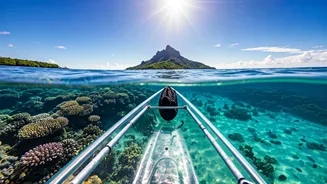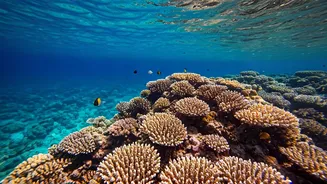Preparing the Journey
Planning is paramount for a successful multi-day kayak trip. Before launching into the waters, meticulous preparation is necessary. This involves detailed
route planning, considering weather conditions, and understanding the tides and currents that can influence the kayak's course. Essential gear, including the kayak itself, paddles, life vests, and navigation tools like a map, compass, and GPS, should be thoroughly checked. Provisions such as food, water, and emergency supplies must be carefully calculated and packed to last the duration of the trip. Furthermore, securing appropriate permits and understanding the regulations of the reef area are critical for a responsible and enjoyable adventure. Learning basic kayaking skills and safety protocols before the trip is highly advisable for a secure and comfortable experience.
Kayaking Wildlife Encounters
One of the most thrilling aspects of kayaking in Australia's 'other' reef is the opportunity to witness the incredible marine wildlife up close. The diverse ecosystem supports a rich array of species, offering kayakers unforgettable interactions with aquatic creatures. Paddling through clear waters allows for glimpses of colorful coral formations, bustling with marine life. Kayakers might be lucky enough to encounter dolphins playfully leaping through the waves, graceful sea turtles gliding beneath the surface, or even the majestic whales during migration season. Maintaining a respectful distance from wildlife is crucial, allowing the creatures to live peacefully in their natural habitat. Documenting these interactions through photographs and videos will allow sharing the beauty of the reef and its inhabitants.
Navigating Scenic Landscapes
The 'other' reef is famed not just for its marine life, but also for its unparalleled scenic beauty that unfolds with every paddle stroke. Kayakers traverse through a mosaic of stunning landscapes, including mangrove forests, secluded beaches, and hidden coves, each offering a unique perspective. The clear waters provide excellent visibility, allowing for appreciation of the vibrant colors beneath the surface, while the coastal areas feature dramatic cliffs, sandy shores, and lush vegetation. Many areas are accessible only by kayak, providing a sense of discovery and isolation. The changing light throughout the day adds a dynamic element to the experience, with the golden hues of sunrise and sunset painting the sky and water with breathtaking beauty. Choosing the right route and planning the day to maximize the experience of these visual delights is essential.
Camping Under the Stars
A multi-day kayak trip on Australia's 'other' reef often includes overnight camping, giving paddlers a chance to fully immerse themselves in the experience. Camping sites are frequently found on secluded beaches or in hidden coves, providing a sense of tranquility and an opportunity to reconnect with nature. Preparing for an overnight stay involves bringing camping gear such as a tent, sleeping bag, and cooking equipment. Setting up camp provides a chance to relax after a day of paddling, enjoy a meal under the stars, and share stories with fellow travelers. Proper waste disposal and adherence to 'leave no trace' principles are essential to protect the delicate environment. The night sky over the reef can be a spectacular sight, far from city lights, with the Milky Way visible and teeming with constellations, which enhances the unique and unforgettable camping experience.
Safety and Responsibility
Safety and responsible travel are of utmost importance on a multi-day kayak trip, as participants should be aware of the potential risks and take measures to mitigate them. Before embarking on the journey, it is critical to inform someone about the planned itinerary, including the route, expected return time, and contact information. Weather conditions should be consistently monitored, since changing winds and sea conditions can greatly impact the safety and enjoyment of the trip. Proper kayaking skills, including efficient paddling techniques and the ability to handle various water conditions, are fundamental for a comfortable and secure journey. First-aid training and the possession of a comprehensive first-aid kit can be crucial in emergencies. Staying informed about local wildlife, their habitats, and potential hazards, such as dangerous marine species, enables kayakers to explore safely while respecting the environment. Following these safety guidelines is essential for a memorable and safe adventure.
















